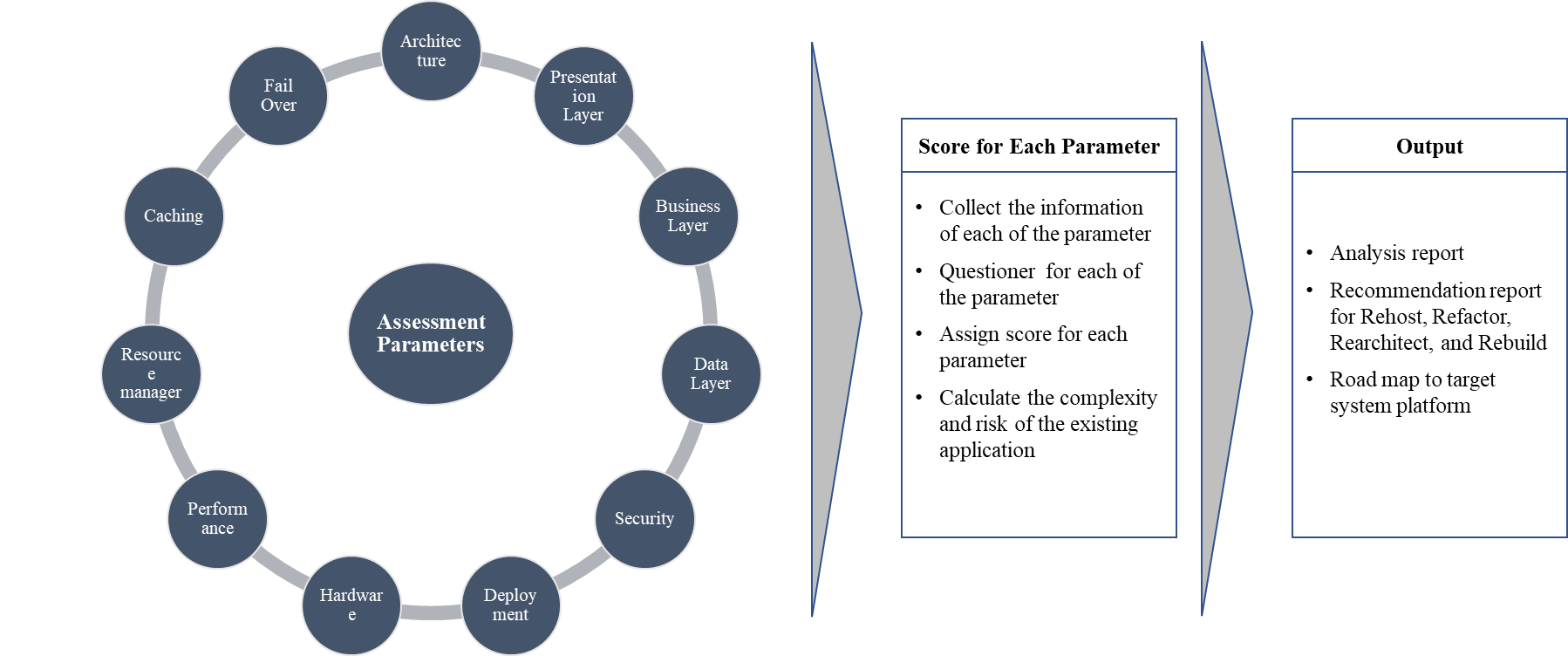Application Assessment Questions for Migration Projects
Most applications/projects are moving to Cloud platforms/On-premise. Therefore, assessing the existing application is critical concerning application complexity and risk.
Join the DZone community and get the full member experience.
Join For FreeMost existing applications/projects are moving to cloud platforms/on-premise using microservices architectures. Assessment of the existing application is critical concerning application complexity and risk. An appropriate strategy has to define to analyze the current application to determine the risk and complexity of the existing application landscape. The assessment considers factors like overall architecture, presentation layer, business layer, data layer, security, deployment, technology, infrastructure, performance, and monitoring for existing applications. Collect the information from the different parameters and decide which is the best option for migration strategies like rehost, refactor, rearchitect, and rebuild. For each parameter, the architect fills in the information by studying the existing application/collecting the information from the application stack holders. Application assessment helps the organization to understand the following:
- Understanding of the existing application architecture and critical findings.
- Integration points across applications (upstream and downstream).
- Infrastructure and software usage.
- Pain areas related to business users.
- Road map to target system platform using any one of the migration strategies.
There are a number of assessment criteria that information will need to be gathered for to provide an assessment of the applications as below:
- Business and technical value contributions like; reliability, scalability, and flexibility.
- Risk exposures like; strategic, operations, and technology risks.
- Cost of operations with respect to application, project, and business.
- The attractiveness of system, business, and delivery.
Each and every application assessment team create a template to prepare and identify the appropriate questionnaire related to the above criteria. Based on the assessment report, the application owner can decide to migrate the application to the cloud/on-premise. The below diagram shows a very high-level process flow for application assessment.

The below table describes questions for each of the assessment parameters listed above. The application architect's score must be based on his experience. For each and every question, the architect has to assign some score and finally decide whether the assessment application can be moved to the target architecture or not. The application architect has to answer the below questions before proposing the target architecture in the assessment phase.
Assessment Parameter |
Questions to Ask as Part of the Assessment for Migration |
Application Architecture |
|
Presentation Layer |
|
Business Layer |
|
Data Layer |
|
Security |
|
Deployment |
|
The conclusion is that the questionnaire is not limited to the above. The questions can be extended, and assign values for each question to arrive appropriate assessment of the existing application. Then, based on the report, the application owner can make proper migration decisions. Finally, provide the application migration conclusions and recommendations as part of the migration road map document.
Opinions expressed by DZone contributors are their own.

Comments